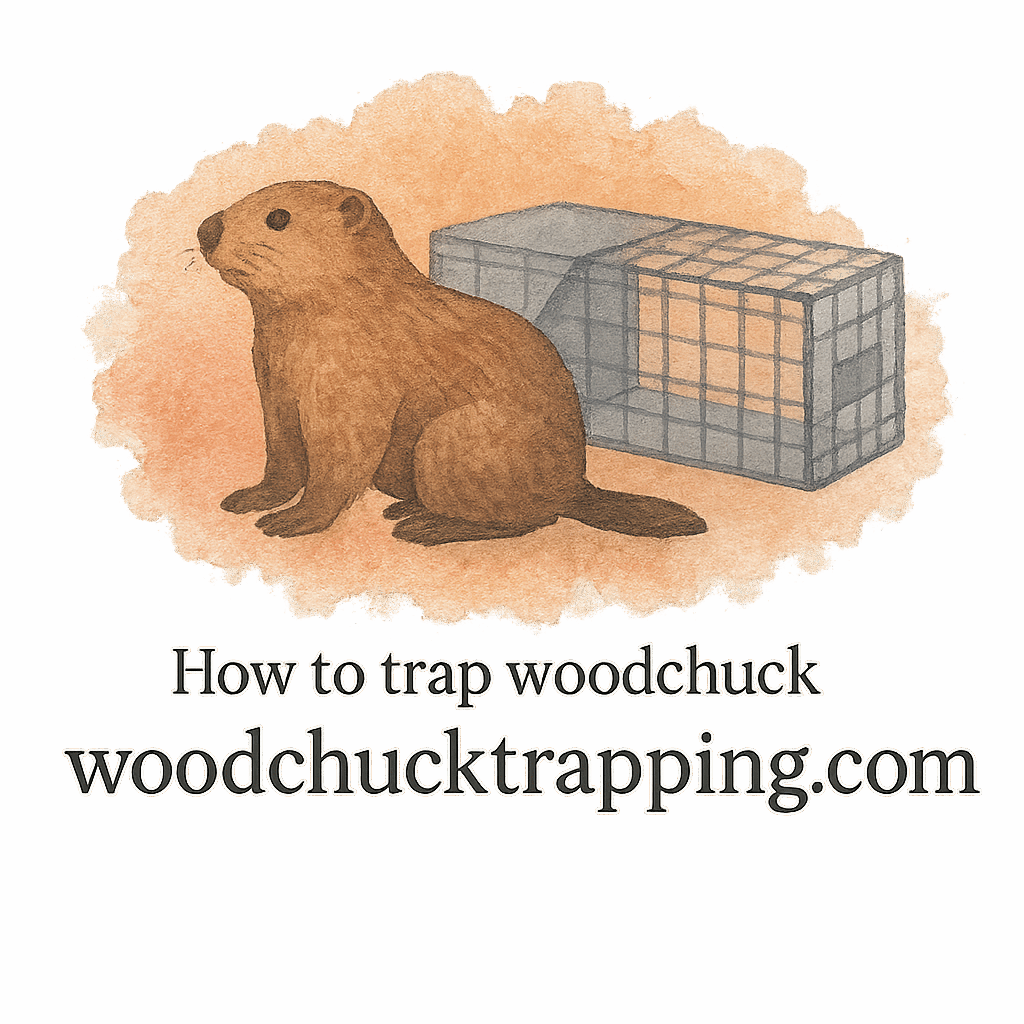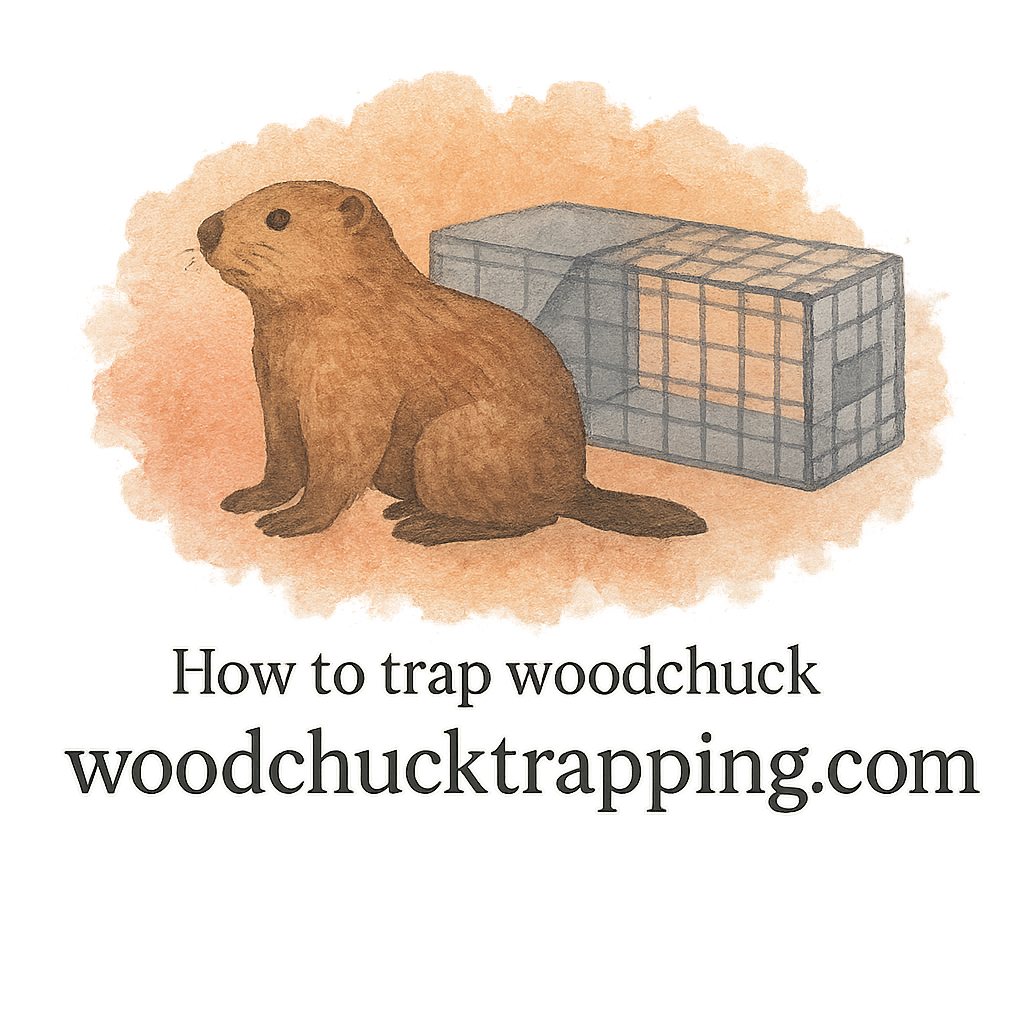Introduction to Woodchuck Feeding Behavior
So, you’re trying to trap a woodchuck? Well, the first rule of successful trapping is knowing your enemy—or in this case, your hungry little backyard invader. Woodchucks (also known as groundhogs) are notorious for their munching habits, and understanding exactly how and what they eat can make all the difference when you’re setting up a bait.
Before we dive in, it’s worth mentioning that targeting their feeding habits is a core component of effective trapping. We’ll break down their favorite foods, when they eat, how their behavior changes by season, and what triggers them to start munching.
Why Understanding Feeding Habits Matters
Imagine throwing a dinner party and serving food your guests hate. That’s what baiting a trap without knowing woodchuck feeding habits is like. To bait effectively, you need to think like a woodchuck. This not only increases your success rate but also minimizes the chances of capturing non-target animals.
For even more comprehensive advice, check out our in-depth trapping techniques guide.
Habit 1: Woodchucks Are Daytime Grazers
Peak Feeding Hours
Woodchucks are not night owls. These critters are diurnal, which means they do their feeding during daylight. They’re most active in the early morning and late afternoon. If you plan to set bait, make sure it’s out before sunrise or just before dusk for best results.
Habit 2: Preference for Leafy Greens and Vegetables
Common Garden Favorites
Woodchucks love a salad. Seriously. They prefer leafy greens like lettuce, kale, clover, and dandelions. If you have a vegetable garden, you might have already experienced the wrath of a hungry woodchuck. Beans, peas, carrots, and sweet corn? All fair game.
For tips on using these as bait, our baiting and luring guide goes deep into the details.
Habit 3: Seasonal Shifts in Diet
What They Eat in Spring vs Fall
Their menu changes with the seasons. In spring, they crave tender new greens. Summer brings fruit cravings like berries. Come fall, they’re all about calorie-rich plants to bulk up for hibernation. Adjust your bait accordingly depending on the season.

Habit 4: Proximity to Burrows Influences Feeding
Territory Range and Feeding Spots
Woodchucks typically forage within 50 to 150 feet of their burrows. The closer your bait is to their home base, the better your chances. They rarely venture far from their safe zones. Check out burrow activity before placing traps.
Habit 5: Hydration Through Food Intake
Moisture-Rich Plants They Prefer
Believe it or not, woodchucks rarely drink water. They get hydration through food—think melons, cucumbers, and juicy clover. Moist foods can be especially attractive in dry summer months.
Habit 6: Selective but Opportunistic Feeders
Behavioral Patterns in Urban vs Rural Areas
While they do have preferences, woodchucks adapt based on availability. In rural areas, they stick to native vegetation. In urban settings? They’ll gobble up garden produce and ornamental plants. Your bait should mimic what’s already nearby.
For more tips on using the right tools, our equipment reviews might help you gear up smartly.
Habit 7: Feeding Linked to Burrow Entry Points
How Burrow Location Affects Baiting
Set your bait near active burrow entrances, especially those with fresh dirt or tracks. Woodchucks often feed just a short dash from their dens, and placing bait here increases your odds.
Habit 8: Feeding Triggers Based on Scents
Using Scent Baits Effectively
Woodchucks have a solid sense of smell. You can use this to your advantage by incorporating scent baits like apples or cantaloupe rinds. Pair it with scent baiting techniques to maximize effectiveness.
Smelling success? Good. Don’t forget to wear gloves to avoid contaminating bait with human scent.
Habit 9: Woodchucks Avoid Disturbed Areas
How Human Scent and Movement Affect Feeding
They’re cautious creatures. A recently disturbed area will likely be avoided for a while. When setting bait, keep movement minimal and avoid leaving your scent behind. Again, use gloves and minimize your presence post-setup.
Explore our section on laws and safety to ensure you stay within legal guidelines.
Tips for Effective Bait Placement
- Place bait directly on the trap trigger pan
- Use moisture-rich and aromatic bait
- Place bait near active burrow entrances
- Minimize human scent with gloves and scent blockers
- Check traps during peak feeding hours
Dive deeper into trapping essentials for more fine-tuned strategies.
Common Mistakes to Avoid When Baiting
- Using dry or old food as bait
- Placing traps too far from burrows
- Ignoring seasonal food preferences
- Not securing the bait properly on trap
- Leaving human scent on traps or bait
Conclusion
Mastering woodchuck feeding habits is your first step to becoming a baiting pro. From knowing their veggie-loving ways to using scent cues effectively, this knowledge arms you with everything you need for a successful trap. Be smart, be patient, and remember—woodchuck baiting isn’t about brute force; it’s about understanding behavior.
Need more help? Explore our collection of expert advice on woodchuck trapping and discover related topics like yard damage prevention, humane handling, and more.
FAQs
1. What is the best bait for woodchucks?
Moist, sweet foods like cantaloupe, apples, and lettuce work great. Just make sure it’s fresh!
2. How far do woodchucks travel for food?
Usually within 150 feet of their burrow. Keep your traps close to home base.
3. Do woodchucks eat meat or insects?
Nope, they’re herbivores. Strictly plants, fruits, and veggies.
4. Can I trap a woodchuck humanely?
Absolutely. Check out our guide on humane methods for more info.
5. How often should I check the trap?
At least twice a day. Morning and evening are ideal.
6. Are woodchucks dangerous to pets?
Not usually, but a cornered woodchuck will defend itself.
7. What if I don’t catch anything?
Try switching bait, moving the trap, or reducing human scent. Read more in how to trap.


